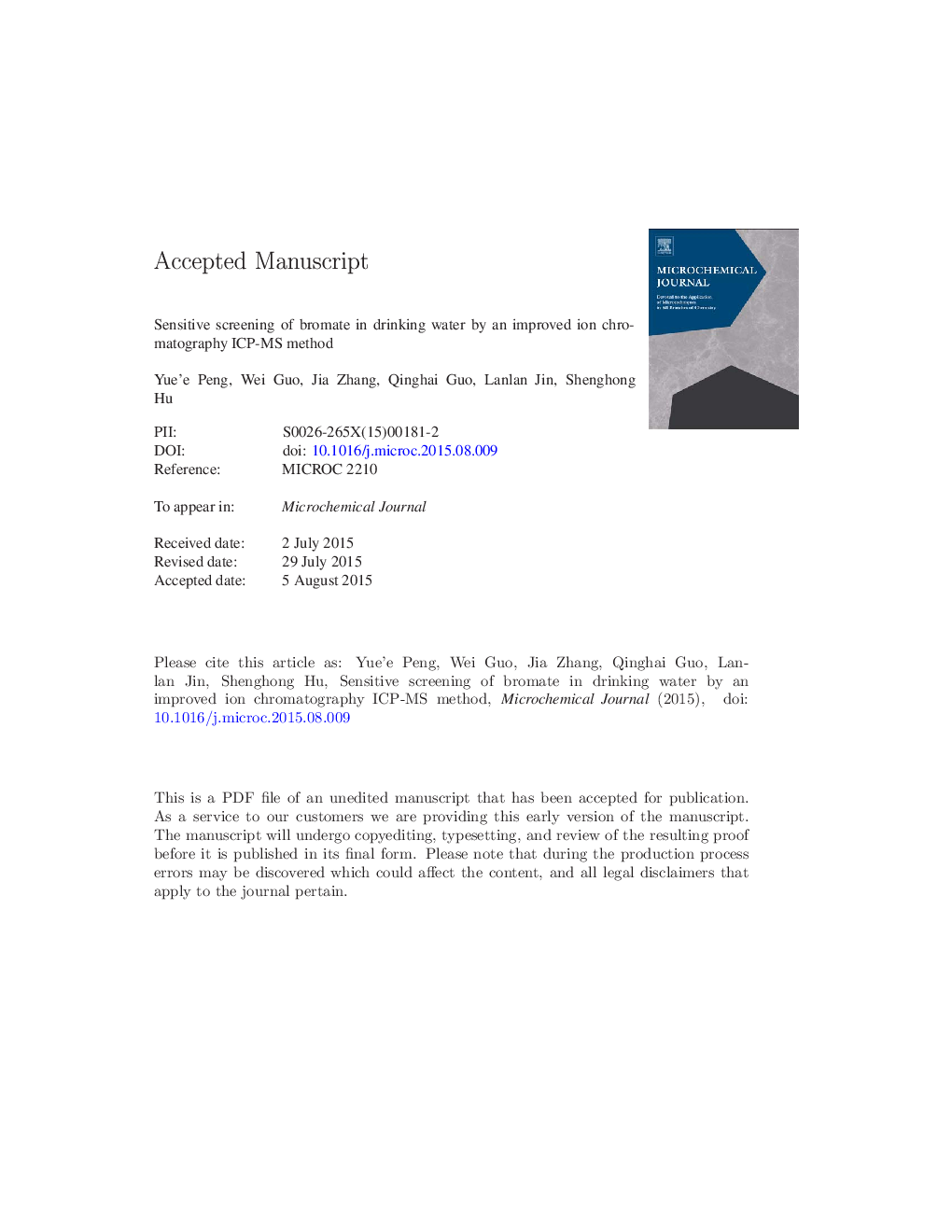| کد مقاله | کد نشریه | سال انتشار | مقاله انگلیسی | نسخه تمام متن |
|---|---|---|---|---|
| 7642017 | 1494870 | 2016 | 30 صفحه PDF | دانلود رایگان |
عنوان انگلیسی مقاله ISI
Sensitive screening of bromate in drinking water by an improved ion chromatography ICP-MS method
دانلود مقاله + سفارش ترجمه
دانلود مقاله ISI انگلیسی
رایگان برای ایرانیان
موضوعات مرتبط
مهندسی و علوم پایه
شیمی
شیمی آنالیزی یا شیمی تجزیه
پیش نمایش صفحه اول مقاله

چکیده انگلیسی
As a known carcinogen, BrO3â is generated during the sterilization of drinking water by ozone treatment. An improved ion chromatographic technique in tandem with inductively coupled plasma mass spectrometry (IC-ICP-MS) was established for detection of trace-levels of BrO3â in drinking water. Isocratic elution using 40 mM KOH facilitated chromatographic separation of BrO3â and Brâ in less than six minutes. The potentially interfering 38Ar40ArH+ and 39K40Ar+ ions at the bromine mass (m/z 79) position were significantly eliminated by oxidization of 79Br+ to 79Br16O+, where the latter ion could be detected at the interference-free mass of m/z 95 by the reaction with reactive N2O gas in a dynamic reaction cell (DRC). Compared to detection of the peak at m/z 79, the signal-to-background ratio of the target ions (at m/z 95) was enhanced by two orders of magnitude. Moreover, the issue of reduced signal intensity of the target ions due to the high-salt mobile phase was alleviated by use of an online argon aerosol dilution (AD) technique. This technique can provide adequate stability and accuracy for bromine speciation in a long-term continuous run (> 27 h). The limit of detection (LOD) was 0.013 μg Lâ 1 for BrO3â, and the relative standard deviation (RSD) for five injections of 0.5 μg Lâ 1 BrO3â was in the range of 2.1-4.5%. The analytical results for three water standard reference materials (SRMs) were in agreement with the certified values. The technique was applied to the determination of BrO3â in fifteen bottled water samples and two tap water samples, three of which contained a higher level of BrO3â than the maximum allowable concentration (MAC) of 10 μg Lâ 1.
ناشر
Database: Elsevier - ScienceDirect (ساینس دایرکت)
Journal: Microchemical Journal - Volume 124, January 2016, Pages 127-131
Journal: Microchemical Journal - Volume 124, January 2016, Pages 127-131
نویسندگان
Yue'e Peng, Wei Guo, Jia Zhang, Qinghai Guo, Lanlan Jin, Shenghong Hu,